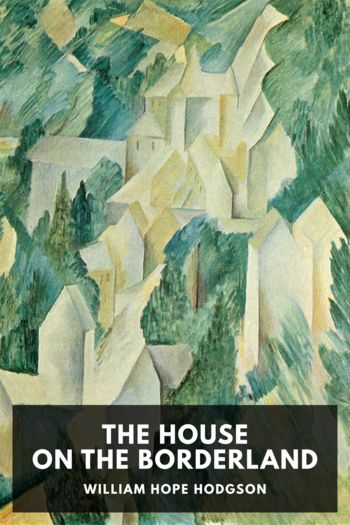Gluck by Diana Souhami (most interesting books to read .TXT) 📗

- Author: Diana Souhami
Book online «Gluck by Diana Souhami (most interesting books to read .TXT) 📗». Author Diana Souhami
Her stay was a success. ‘I have never met such sweet and kind people as these’, she wrote to her mother (14 October 1939). She found it a strain for she was out of practice and anxious to do her best. They turned the fives court ‘a vast echoing building’ into a studio for her. She stayed for two weeks and Nesta called over a few times to see how she was getting on. It is not technically one of her better portraits, but with its background of oak leaves the Bougheys felt that it caught the boy’s patriotic spirit. And it perhaps symbolized the broad shouldered, innocent-eyed young men who were to fight and, as in John Boughey’s case be killed, in the war against Hitler.
Of the visit, John Boughey’s sister, Hermia, remembers candlelit dinners, her father opening special bottles of wine, a great deal of laughter and Gluck’s lively conversation. And their mother, Lady Boughey, wrote Gluck a long letter of thanks both for the consolation of the portrait and for what she felt to be ‘the great and wonderful gain of a friend … which is precious and I know enduring.’ The family were to remain devoted and lifelong friends of Gluck’s.
The next commission came from Nesta. It was a portrait of her mother, Ethel Sawyer, known to friends as Boo. Gluck began it while staying with Boo in October 1939 and finished it when she moved into her new studio at Millers Mead. Boo was elderly and at times illness made her tearful, but in her portrait she puts on a brave face. She looks the epitome of a respectable English gentlewoman: veiled hat, no-nonsense smile, pearls, mayoral collar and bright if rather watery eyes.
Gluck could have picked up any number of portrait commissions. The war sharpened people’s awareness of the tenuousness of human life and they wanted consoling images of those whom they loved. The solicitor who drew up the agreement for the renting of Millers Mead was impressed with Mrs Sawyer’s portrait and wanted one of his eldest son. The Maufes hoped for three – of Prudence, Edward and their son. Friends of the Bougheys offered her commissions. Word went round about her work. ‘Not that I want all these portraits,’ she wrote to the Meteor, ‘as you know I find them a terrible strain, but just the same it’s marvellous in these difficult days and I am grateful really to help my diminishing income.’
Early in December 1939 she went to Chillington Hall, Wolverhampton, to do a portrait of Diana Giffard, who later married the MP Airey Neave.3 She travelled by train to Wolverhampton with all her gear and the Giffards met her at the station. ‘It looks a bit over life size’, Gluck wrote to her mother of the house. She described the Hall as a ‘bracing place 500 feet up’. Everything was on the grand scale. Even the private driveway was two miles long which played hell with the petrol ration and presented problems with the post. The place was so vast that footmen bicycled through the hallways from the servants’ quarters when the front doorbell rang, in order to arrive before visitors grew too disconsolate. A fire was lit for Gluck each night in her room. She slept well, enjoyed herself, worked hard, and thought the Giffards charming and sweet to her. ‘Last night they started to teach me to knit and we became nearly hysterical with laughter in the process. It’s rather fun.’ It was a pair of mittens on four needles. She did not get far, and Diana Giffard finished them and gave them to her for Christmas.
Gluck worked out something of a formula for her commissioned, flat-fee portraits – a head and shoulders with an uncomplicated background took her two weeks. But now she again ran into problems with the quality of the canvas:
Every day I do a tiring good day’s work and the next day it all looks as if water had run through sand. Nothing to show for it.… It’s one of the things I’ve got to settle when I get to London. I can’t go on like this any longer. This is the third experience and a new guaranteed canvas.… It has all taken at least four times as long.
She was back in London in time to do her Christmas shopping at Whiteleys department store and to arrange for the transfer of her piano to Millers Mead. It was a snowy winter, the water pipes at the Mill House froze and the hens declined to lay. Gluck bought a flying suit so that she could work in the icy weather. ‘I just pull it on over very few clothes, zip it up and am so warm it’s almost too much. It looks very dashing so I feel quite smart at the same time.’
She had collected together what she could of her world and brought it as close to Nesta’s as was possible. Close as this was, it was by no means as close as she had dreamed and hoped. But she believed, fatalistically, that things would work out as they must, and she was prepared to wait and see. She spent her fourth consecutive Christmas at Plumpton with Nesta, Seymour, the Villiers and the new addition, Zar. And on New Year’s Eve Nesta went over to Millers Mead. The two of them had supper together, danced and saw in the New Year. Nesta who had a bad cold left at 7.45 a.m. on New Year’s Day.
TWELVE
THE WAR EFFORT
In March 1940 Gluck became ill. Love, for which she had





Comments (0)